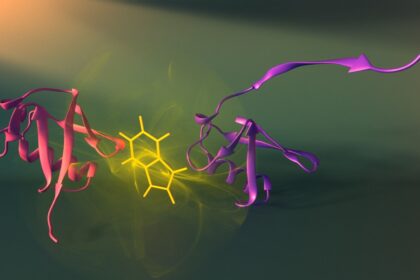In April 2024, the Pritzker Architecture Prize was awarded to Riken Yamamoto. This award is often called the “Nobel Prize of Architecture,” and it’s given to someone who has made a big contribution to the field. But Yamamoto didn’t win because of flashy buildings or new materials. He won for something deeper — his belief that architecture should serve the community. He builds not only for the person who owns the building, but for the people around it too.
Below are key parts of Yamamoto’s life and work that show why he was chosen and what you can learn from his approach. His designs show that even in a world full of private lives and fast change, architecture can still help people feel connected to each other — something that even non GamStop casinos have started to notice as they rethink social space in digital form.
The Early Years That Shaped His View
Yamamoto was born in 1945 in Beijing, just before the end of World War II. After the war, his family moved to Japan. When he was only five, his father died, and he was raised by his mother. She owned a small pharmacy, and they lived behind the shop in a traditional Japanese home. This setup left a strong impression on him. He saw how one part of a house could be open to the public, while another part remained private. That balance between public and private space would later become a key theme in his work.
Instead of treating buildings like isolated units, Yamamoto grew up seeing them as part of a larger setting — the street, the neighborhood, the people passing by. These early years helped him form his ideas on what buildings should do, not just how they should look.
Travel That Opened His Eyes
After finishing university, Yamamoto didn’t go straight into practice. He went traveling instead. He visited villages around the Mediterranean, South America, India, and Nepal. In each place, he talked with locals, looked at how they built their homes, and studied how they lived together.
Despite the different languages and customs, he noticed one thing all these places had in common: strong communities. People looked after one another, and their buildings helped make that happen. It was during these travels that Yamamoto began to understand that architecture should support not only individuals but also the group. These travels gave him more than inspiration. They gave him a mission.
Why Community Matters in His Work
In today’s world, privacy is often a top priority. Many people live in small families or alone. Big cities can feel crowded, yet lonely at the same time. Yamamoto sees this change and responds through his buildings. He believes that every building, no matter how big or small, can help build community.
This doesn’t mean removing personal space. Instead, Yamamoto tries to blur the lines between private and public areas in a gentle way. He creates places where people can meet, talk, and support each other — without forcing them to do so. His goal is to design buildings that welcome people in and connect them, rather than separate them.
A House That Feels Like a Terrace
One of his early projects, Yamakawa Villa, shows how he uses design to encourage togetherness. In this house, there is no sharp division between inside and outside. The living and dining areas open up like a terrace, inviting nature and people in. Only the bedrooms and bathrooms are closed off for privacy.
This layout makes it easy for guests or even passers-by to feel welcome. It changes the idea of what a home is — not just a space to hide in, but a place to share. It’s not about removing walls, but about rethinking what those walls are for. By designing homes like this, Yamamoto creates a new kind of freedom — one that invites, not isolates.
A Fire Station That Builds Trust
In Hiroshima, Yamamoto designed a fire station that looks almost like a glass box. You can see everything — the firefighters working, training, and getting ready to help the city. This openness is no accident. It’s meant to build trust between the people of the city and the emergency workers who serve them.
Instead of hiding the daily work of firefighters, the building shows it off. It turns the station into a part of the neighborhood, not just a functional space. Yamamoto believes that when people can see and understand what others do for them, it creates respect and a stronger bond. That’s what real community means.
A University Without Walls
Another powerful example of his approach is the Saitama Prefectural University. This campus has nine different buildings, but you might not notice. That’s because they are connected by open terraces and walkways, creating a sense of flow between them. You can stand in one classroom and look across to another.
This design doesn’t just make the school look nice. It makes people act differently. Students from different departments see each other more. They might talk, share ideas, or just say hello. That small change can build a larger sense of connection. Yamamoto doesn’t just want people to learn from teachers — he wants them to learn from each other too.
His Design Is Not About Showing Off
Many buildings today are made to stand out. They have strange shapes or bright colors that make them look “innovative.” Yamamoto’s work is different. His buildings may not look special from a distance, but they are designed with care. They work well for the people who use them and fit naturally into their surroundings.
This quiet style may not win awards for being the biggest or the flashiest. But it wins something more important — the trust of the people who live, work, and move through his buildings every day. His work doesn’t scream for attention. Instead, it calmly makes life better.
Why the Pritzker Committee Chose Him
The Pritzker jury said something very clear about why Yamamoto won. They said that future cities must be designed in ways that allow people to meet, talk, and help each other. Yamamoto’s work does this again and again. By gently connecting private life with public space, he helps communities grow stronger.
At 78, Yamamoto is still active. He still lives in Yokohama and works closely with his neighbors. For him, architecture is not about fame or money. It’s about helping people live better together. That message is more important than ever today.
One Architect, One Idea, Many Lives Improved
The story of Riken Yamamoto shows that good design is not just about looks. It’s about values. It’s about asking what buildings are for, not just what they look like. And it’s about caring — not just for the person who pays for the building, but for everyone who will see it, pass by it, or live near it.
In a time when society often feels divided, Yamamoto’s work reminds you that design can bring people back together. Whether it’s a villa, a fire station, or a university, every space can be a small piece of something bigger — a true community.




